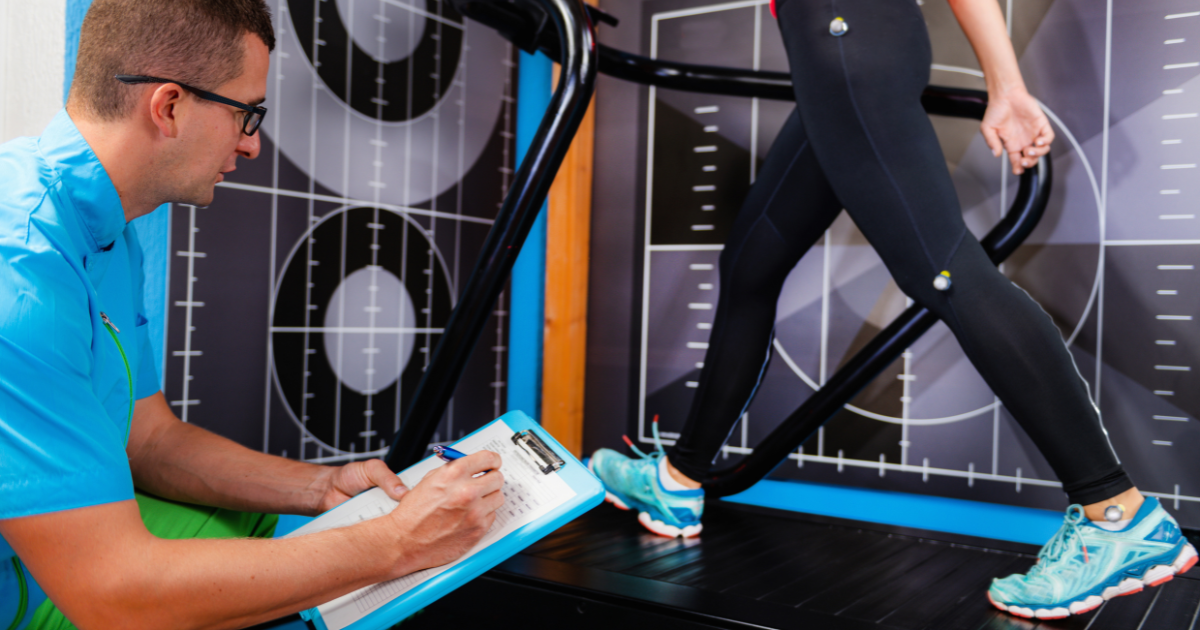Can Foot Issues Cause Knee Pain?
Key Takeaways:
- Knee pain can often be caused by foot problems such as flat feet, high arches, plantar fasciitis, bunions, and wearing unsupportive shoes. These issues can misalign your body, leading to discomfort and strain on your knee joints.
- Overuse injuries, like patellofemoral pain syndrome and iliotibial band syndrome, can develop due to poor foot alignment and repetitive strain.
- Watch for key symptoms like knee swelling, stiffness, pain after walking or standing, and changes in your gait. These may signal that your foot pain is contributing to your knee pain.
- To relieve knee pain, focus on strengthening your lower limbs, using orthotic inserts, resting, and elevating your knees.
- LUMINAS Knee Pain Relief Patches offer fast, drug-free relief from persistent discomfort.
- If home remedies don’t alleviate your pain, consult a professional for gait analysis, custom orthotics, or physical therapy to address the underlying foot issues and prevent further damage.

When we think about knee pain, most of us focus on the knee joint itself. But did you know that the source of your knee problems could actually start in your feet? It’s true! Foot pain and issues with your ankle or lower limbs can throw off your body’s alignment and lead to discomfort in your knees. In this blog, we'll explain how this happens and provide solutions to help relieve pain.
If you're currently experiencing knee pain, it’s important to understand how problems in your feet might be the root cause. Thankfully, there are ways to manage this pain effectively. For fast, drug-free relief, LUMINAS Knee Pain Relief Patches can help ease discomfort while you work on addressing the underlying causes.
How Can Foot Pain Cause Knee Pain?
Your feet are the foundation of your body. When they don’t work properly, the rest of your lower extremities can be affected. If your foot and ankle don’t provide the right support or alignment, your knees may have to work harder to keep you balanced. This extra pressure and excessive strain can lead to chronic knee pain over time.
Here are a few common foot problems that might be causing you to experience knee pain:
1. Flat Feet
Flat feet, also known as fallen arches, occur when the arches of your feet are lower than they should be. This can cause over-pronation, making your feet roll inward when you walk. Over time, this creates twisting forces in your knee joint, leading to knee pain and discomfort.
2. High Arches
Having arches that are too high can also cause problems with knee pain. High arches put more weight on the ball and heel of your foot, which doesn’t allow the shock absorber function of your feet to work properly. This can place more pressure on your knees, leading to pain and knee swelling.
3. Plantar Fasciitis
Plantar fasciitis is a painful condition affecting the heel and bottom of the foot. When you’re in pain, you might change how you walk to avoid discomfort, but this can lead to knee pain, hip pain, and even lower leg bone issues over time.
4. Bunions and Hammertoes
Bunions and hammertoes can cause bilateral foot pain and force you to alter your gait, which impacts the alignment of your knees. This can lead to patellofemoral pain syndrome or irritation in the patellar tendon.
5. Wearing Unsupportive Shoes
Wearing shoes without proper support can worsen or even cause foot pain, which can spread to your knees. Shoes that are too flat, tight, or high can strain the joints of your lower limbs, leading to pain in your knees, hips, and lower leg.
6. Overuse Injuries from Foot Issues
In some cases, knee pain can develop due to overuse injuries caused by the way you walk or stand over time. Here are some of the most common overuse injuries linked to foot problems:
- Patellofemoral Pain Syndrome
Often called "runner’s knee," this condition occurs when the kneecap is misaligned, causing pain around the kneecap. Foot issues like flat feet or poor footwear can lead to this condition by causing an abnormal gait and excessive strain on the knee joint.
- Iliotibial Band Syndrome
The iliotibial band is a thick band of tissue running along the outside of the leg. Excessive strain or improper foot alignment can cause friction between the band and the knee joint, leading to pain. This condition is common in runners and athletes.
- Osgood Schlatter's Disease
This condition affects the growth plate at the top of the shinbone and is commonly seen in children and teenagers during growth spurts. Repeated stress from foot issues can pull on the patellar tendon, causing pain and swelling.
- Tendonitis
Overuse of the knee joint due to foot misalignment can lead to tendonitis, an inflammation of the tendons surrounding the knee. If left untreated, this can lead to more serious conditions like rheumatic diseases or arthritis.
Symptoms to Look Out For
If you’re dealing with knee pain, it’s important to pay attention to certain symptoms that may suggest your foot pain or alignment issues are contributing to the problem. Recognizing these signs early on can help you address the root cause and prevent further discomfort in your lower limbs. Here are some key symptoms to watch for:
1. Pain in the Knee Joint After Walking or Standing
If you notice knee pain that flares up after a long walk, standing for long periods, or wearing unsupportive shoes, it could be a sign that your feet aren’t properly supporting your body. Foot pain or misalignment can force your knees to overcompensate, leading to discomfort.
2. Knee Swelling or Stiffness
Swelling around the knee joint or stiffness after activity could indicate that your knees are experiencing excessive strain due to foot problems. Flat feet or high arches can cause this type of stress on the knees.
3. Hip or Lower Back Pain
Since your body works as a connected system, misalignment in your feet can also cause hip pain or discomfort in your lower back. If you’re experiencing pain in both your knees and hips, your feet may be to blame.
4. Changes in Your Walking Pattern (Gait)
Have you noticed changes in how you walk? If you’re adjusting your gait due to foot pain, such as from plantar fasciitis or bunions, this change can lead to additional strain on your knees. A noticeable limp or shift in how you distribute your weight while walking is a red flag.
5. Pain That Worsens With Activity
If your knee pain tends to worsen with physical activity, especially after walking or running, it may be due to excessive pronation or improper foot alignment. Over time, this can lead to more serious knee problems, such as patellofemoral pain syndrome.
How to Relieve Knee Pain Caused by Foot Issues
If you think your knee pain might be caused by foot pain, don’t worry—there are plenty of ways to find relief. Here are a few simple tips to help relieve pain and keep your knees healthy:
1. Use Orthotic Inserts
Orthotic inserts can help correct your foot problems, such as flat feet or high arches, by supporting your feet. This reduces the pressure on your knees, allowing them to align properly with your lower leg and upper leg bones.
2. Try LUMINAS Knee Pain Relief Patches for Fast Relief
If your knee joint pain is persistent, LUMINAS Knee Pain Relief Patches offer a natural, drug-free way to soothe inflammation and discomfort. Our patches are long-lasting and fit into your daily routine, giving you the freedom to move without worrying about pain.
3. Rest and Elevate Your Knees
When your knees are in pain, it’s important to rest. Elevating your legs helps reduce inflammation and knee swelling, which can ease discomfort. For added relief, consider using LUMINAS Knee Pain Patches while resting to provide fast, effective alleviation from knee pain.
4. Strengthen and Stretch Your Muscles
Strengthening the muscles in your lower limbs, legs, and feet can help prevent knee pain and improve alignment. Try these exercises:
- Calf Raises: Stand on your toes and lift your heels to strengthen your calves, helping to support your knees.
- Squats: Squats are a great way to strengthen your upper leg muscles, like your quadriceps and hamstrings, which support the knee joint. To do a squat, stand with your feet shoulder-width apart and slowly lower your hips as if you’re sitting in a chair. Be sure to keep your knees aligned with your toes to avoid placing extra strain on your knees.

When to Visit a Professional for Help
While many cases of knee pain caused by foot issues can be managed at home, there are times when professional help is necessary. If your pain is severe, lasts for weeks, or worsens, seeing a doctor or podiatrist can help.
1. Gait and Foot Assessment
A podiatrist or orthopedic doctor may perform a gait analysis to see if you have flat feet, excessive pronation, or other issues that could be causing your knee pain. The American Podiatric Medical Association recommends a gait analysis to understand how your foot pain is affecting your knee joint.
2. Custom Orthotic Inserts
A professional may suggest custom orthotic inserts to correct your foot alignment. This personalized treatment plan can ease the excessive strain on your knees, preventing further damage to your joints.
3. Physical Therapy
If your knee pain is persistent, physical therapy can help. A physical therapist will show you exercises to strengthen your lower limbs, improve flexibility, and reduce pain. Physical therapy is especially effective for conditions like iliotibial band syndrome and osgood schlatter's disease.
4. Advanced Treatments
In some cases, doctors may recommend treatments like cortisone injections or surgery for conditions such as rheumatic diseases, like rheumatoid arthritis or osteoarthritis. These treatments help reduce inflammation and pain in the knee joint.

Start at Your Feet for Knee Relief
It might surprise you to learn that your foot pain is a major cause of your knee problems. By addressing foot issues like flat feet, plantar fasciitis, or excessive pronation, you can reduce the strain on your knees and start feeling better.
Taking steps to strengthen your muscles, using orthotics, and resting can make a big difference in relieving pain. And if you need fast relief, LUMINAS Knee Pain Relief Patches can help manage your discomfort, making it easier to stay active and pain-free.
Ready to find relief? Try LUMINAS Knee Pain Relief Patches and take the first step toward pain-free knees!









